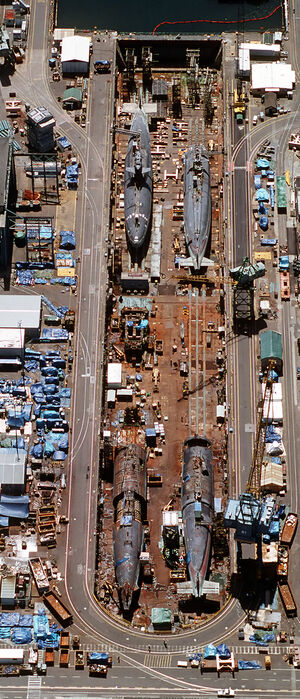Submarine (nonfiction): Difference between revisions
No edit summary |
|||
| Line 18: | Line 18: | ||
<gallery mode="traditional"> | <gallery mode="traditional"> | ||
File:Submarine and anti-submarine (1919).jpg|link=The Unruly Submarine|[[The Unruly Submarine]]. | File:Submarine and anti-submarine (1919).jpg|link=The Unruly Submarine|[[The Unruly Submarine]], a celebrated children's story. | ||
</gallery> | </gallery> | ||
Revision as of 12:20, 8 June 2016

A submarine is a watercraft capable of independent operation underwater.
Description
The noun submarine evolved as a shortened form of submarine boat (and is often further shortened to sub). For reasons of naval tradition, submarines are usually referred to as "boats" rather than as "ships", regardless of their size.
Although experimental submarines had been built before, submarine design took off during the 19th century, and they were adopted by several navies.
Submarines were first widely used during World War I (1914–1918), and now figure in many navies large and small.
Most large submarines consist of a cylindrical body with hemispherical (or conical) ends and a vertical structure, usually located amidships, which houses communications and sensing devices as well as periscopes.
Modern deep-diving submarines derive from the bathyscaphe, which in turn evolved from the diving bell.
Used as an adjective in phrases such as submarine cable, submarine means "under the sea".
Fiction cross-reference
The Unruly Submarine, a celebrated children's story.



